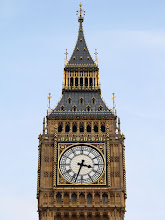Finally, the LHC research program gets under way.
The Large Hadron Collider (LHC) is working properly after its operation was halted due to several technical problems. The 10 billion Swiss franc “physics machine” was built by the European Organization for Nuclear Research (CERN) to answer key unresolved questions about the particles, the smallest known building-parts of the universe. By launching this program in 1994, the 20-nation consortium CERN has become a world-leader in nuclear research and it is outpacing rapidly the rivals as the American Fermi National Accelerator Laboratory in Illinois. In the second part of 2008, the first attempt to start the Collider ended shamefully after ten days as an explosion left part of the tunnel enveloped in helium gas and the electrical connection between the two powerful magnets that steer the protons ceased. Following nearly two years of careful reparation, the experiment was resumed at the end of March this year with promising results even in the first two weeks.
The LHC, which is a 27-km oval-shaped ring of superconducting electromagnets under the Swiss-French border, seek to collide two beams of particles at a nano-fraction, close to the speed of light. Scientists circulate one beam in one direction around the accelerator, one in the other later colliding them to each other generating temperatures more than 100,000 times hotter than the heart of the sun. Meanwhile, the cooling system keeps the machine at -271 °C (a temperature colder then the outer space) by circulating fluid helium around the accelerator ring. At its full power, 600 millions of collisions take place every second, each proton travelling around the accelerator ring 11,245 times a second at 99.99% the speed of light.
“We’ll address soon some of the major puzzles of modern physics…I expect very exciting times in front of us,” said Guido Tonelli, spokesperson of the CMS experiment. Among the top goals of this research program is to find the identity of the dark matter that is believed to make out 96 % of the universe, to analyze the difference between matter and anti-matter, to create conditions similar to those just after the Big Bang, and to search for further hidden dimensions of space. For this, the Collider needs to run for 18-24 months constantly and the obtained data is transferred in a distributed computer network called the Grid, to allow thousands of scientists to process the results. The LHC is far the largest attempt ever made to find out the mysteries of universe.
skip to main |
skip to sidebar
About Me
Email Subscriptions powered by FeedBlitz
Followers
Tags
accident ashcloud Big Bang Bill Gates Billionares. Forbes Magazine bomb Carlos Slim Helu CERN climate change Closing Ceremony Dawn Brancheau Earth Hour FAA Gulf of Mexico Iceland investigation JFK killer whale Lech Kaczynki LHC natural disaster New York oil Olympic Games particles plane crash Poland SeaWorld Shanghai Sydney terrorist traffic controller traffic security Vacouver 2010 volcano Winter World Expo WWF
Powered by Blogger Widgets
Powered by Blogger Widgets

0 comments:
Post a Comment